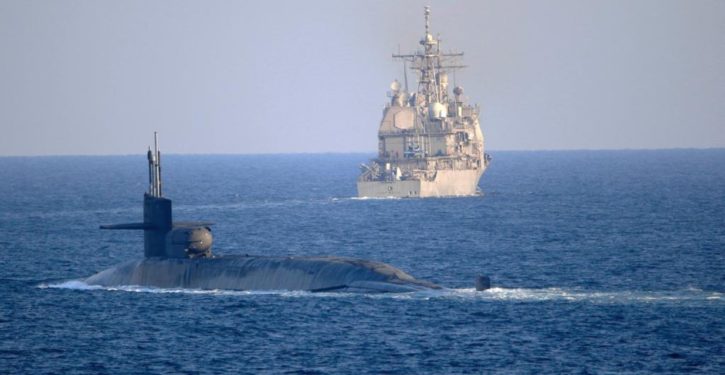
America is having a congressional appropriations meltdown, which is actually more important than you might think. When you’re $25 trillion in debt, adding another near-trillion for light and transient reasons is a non-trivial issue. The House of Representatives on Monday passed a $900 billion “Consolidated Appropriations Bill” which is being touted to the public as a COVID-19 “stimulus” or “relief” bill, but which for some reason needs to state a congressional policy on the reincarnation of the Dalai Lama, among other seemingly unrelated topics. (There are millions of dollars in there for Tibet, as well as projects elsewhere with the adjective “Tibetan” in them, but many citizens are still stumped by the inclusion of the congressional finding on reincarnation.)
So this is in the "stimulus" bill. H/t @LisaDNews
A congressional finding that:
"(3) The Government of the People’s Republic of China has interfered in the process of recognizing a successor or reincarnation of Tibetan Buddhist leaders, including in 1995 by… 1/3 https://t.co/Qfgx2pHYs1
— J.E. Dyer ☘️ (@OptimisticCon) December 21, 2020
Clearly this Consolidated Appropriations Bill is about more than COVID relief. It also has some $1.4 billion for the Smithsonian Museums, $40 million for the always starving Kennedy Center, and a laundry list of dollar figures for social science projects in Asia and Africa.
The Stimulus Bill:
The gov't closes the economy. You lose your job. You face eviction.
$600 for all your troubles.
Meanwhile they send:
$135 million to Burma
$85.5 million to Cambodia
$1.4 billion for "Asia Reassurance Initiative Act"
$130 million to NepalThey hate you. pic.twitter.com/95U2Qt4uNa
— Techno Fog (@Techno_Fog) December 21, 2020
It includes:
$1 billion to Smithsonian
$40 million to Kennedy Center
$154 million to Natnl Art Gallery
$167 million to Natnl Foundation of Arts and Humanities
$14 million to W. Wilson Center
$10 million for ‘gender programs’ in PakistanBut Anmericans get $600
— Michael Dorstewitz (@MikeDorstewitz) December 21, 2020
It’s as if 2020 couldn’t end without shoving into America’s face the utter abandon with which Congress spends our great-grandchildren’s future earnings. This bill appears to be separate, after all, from the $740 billion defense budget bill recently seen in a tail-chase with a presidential veto, and it’s not part of previously policy-locked budgeting. It’s just a big “Wheeeeeee-eeeeee!!!!!” end-of-Congress spending frenzy (lightly tethered, from what I can tell, to a need to keep government funded for another few weeks. Plus the COVID excuse, which is the way it’s being sold to the public, although only a minority of the money in it is going to anything remotely COVID-connected).
All that is to say, you Yanks out there might be pardoned for missing the unusual maritime developments in the Middle East. There have been two in the past week.
One was the transit (apparently last week) of an Israeli Dolphin submarine into the Red Sea. The Dolphins are homeported in Haifa, on the Mediterranean coast, and very rarely move to the Red Sea for deployment. The reporting on Monday 21 December indicated, in fact, the rarest thing of all: that the sub is said to be heading for the Persian Gulf.
Israeli news outlets have been reporting as if the transit on the surface through the Suez Canal is significant, which is not actually the case. Submarines are required to transit the Suez Canal on the surface. It’s kind of annoying for them, in fact: they’re also always put at the rear of the transiting convoy, one of which heads south in the morning from Port Said, and the other, the northbound convoy, which leaves from Port Suez in the afternoon, once the southbound convoy has cleared the Canal. The sub in the rear often has to maintain way at 3-5 knots while the other ships dilly-dally ahead of it.

But apparently, in this case, the opportunity to be seen and no doubt photographed and captured on video was a feature, not a bug. The Israeli government has been silent, but seems to be prepared to have the Dolphin’s presence noted, and to be fine with the coverage in Arab media that says it’s heading for the Persian Gulf. The Dolphin class can carry the Popeye sub-launched cruise missile, with a range similar to the U.S. Tomahawk and the potential for nuclear warheads. If the Israeli sub does go to the Gulf, I would expect it to remain covert the entire time.
On Monday, the 21st, further east, a U.S. Navy task group entered the Strait of Hormuz bearing over 150 Tomahawk missiles – and one platform in that group was USS Georgia (SSGN-729), an Ohio-class former ballistic-missile sub converted to carry a large loadout of Tomahawks. Georgia was in company with two Ticonderoga-class cruisers, USS Port Royal (CG-73) and USS Philippine Sea (CG-58), which each carry several dozen Tomahawks in their own right. Georgia probably carries about 100 Tomahawks, but has the capacity to load 154. If all three platforms were carrying a full complement, about 218 Tomahawks would have entered the Persian Gulf with them.
Moreover, USS Port Royal is an upgraded ballistic missile defense (BMD) ship, and both cruisers are multidimensional, state-of-the-art air defense platforms. USS Georgia, for her part, is also kitted out to support Navy SEAL operations on a substantial scale (i.e., operations involving over 60 SEALs at a time).
Georgia transited the Strait of Hormuz on the surface – and in that case, there is no enforceable requirement for it, as there is in the Suez Canal. The U.S. Navy also posted images taken of the sub and cruisers during the transit (presumably by Navy aircraft). The images were put on Twitter the same day, a rare move typically used to send a signal.
JUST IN: #USNavy's #USSGeorgia transits #StraitofHormuz with cruisers #USSPortRoyal and #USSPhilippineSea. Georgia’s presence in @US5thFleet demonstrates the fleet's ability to operate wherever international law allows. #forcetobereckonedwith
DETAILS ➡️ https://t.co/PObIHE2XC6 pic.twitter.com/ys8cBbnm7k
— U.S. Navy (@USNavy) December 21, 2020
The signal from both the U.S. and Israel is intended for Iran — but also, of course, for Arab partners in the region. LU has already noted the attack a week ago, apparently by Iran-backed Houthi militants, on an oil tanker in Jeddah, in the Red Sea. That attack followed earlier ones (in late November) also along the Saudi coast.
Monday’s reporting on the submarine transits also focused on rocket attacks targeting the U.S. embassy compound in Baghdad. Such attacks in recent months have been connected to Iran-backed militias in Iraq.
There will be very insightful comments to make, no doubt, in the days ahead. It’s not out of the question to imagine that warnings to Iran are about more than rockets launched at the Green Zone and the Iran-backed menace to shipping in the region. The engagement of Israel in an overt role is especially interesting, suggesting an unusual scope of perceived intention by Iran. That said, I would balance expectations about Iran’s intentions between threats to regional nations — Arab nations and Israel — and threats to the United States, starting but not ending with our forces in theater. I suspect the Iranians are watching closely the Georgia runoff election on 5 January, and the convening of Congress on 6 January. The more inevitable Biden looks, the more they will be emboldened to attempt.



